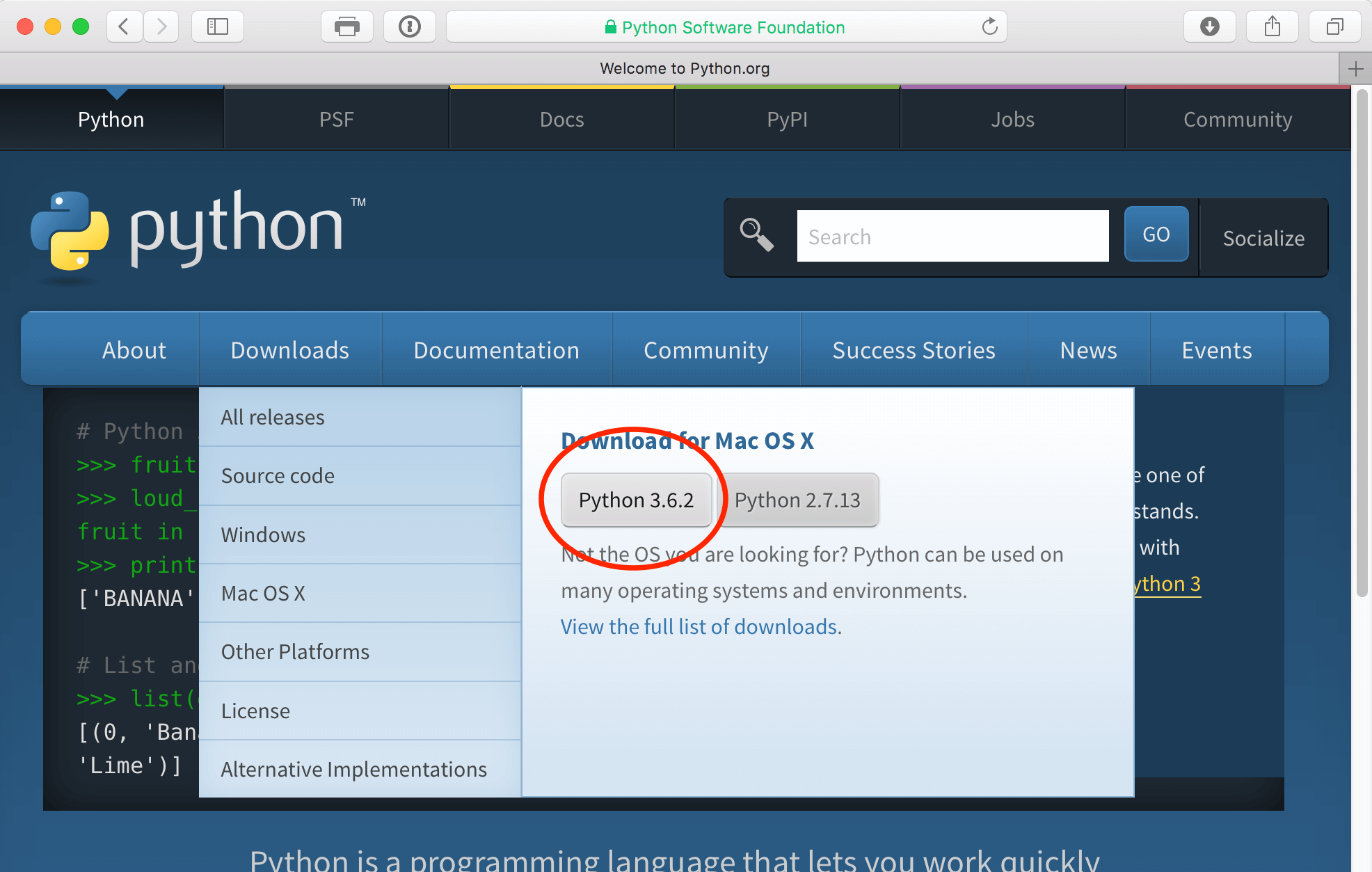

- #INSTALL PYTHON 3 MAC COMMANDLINE HOW TO#
- #INSTALL PYTHON 3 MAC COMMANDLINE INSTALL#
- #INSTALL PYTHON 3 MAC COMMANDLINE MANUAL#
- #INSTALL PYTHON 3 MAC COMMANDLINE PASSWORD#
Run this command: brew install pyenv PyEnv installing This library will help you switch between different versions of Python (in case you need to run Python 2.x for some reason, and in anticipation of Python 4.0 coming). Now let's take a moment to install PyEnv.
#INSTALL PYTHON 3 MAC COMMANDLINE HOW TO#
(Or press any other key if you get cold feet.) How to Install pyenv to Manage Your Python Versions

Homebrew will ask you to confirm you want to install the following. Your terminal will probably look different from this. A screenshot of my heavily customized terminal.
#INSTALL PYTHON 3 MAC COMMANDLINE PASSWORD#
This is the same password you type when you log into your Mac. You will need to type your password to run this command. Your terminal will ask for Super User-level access. Now that you're in a command line, you can install the latest version of Homebrew by running this command: /bin/bash -c "$(curl -fsSL )" You can do this by using MacOS spotlight (command+space) and typing "terminal".


How to Install Homebrew on Macįirst you need to install Homebrew, a powerful package manager for Mac. By the way, if you're wondering why I keep referring to Python 3.x – the x is a stand-in for sub-versions (or point releases as developers call them.) This means any version of Python 3. Have a fun day and happy coding.īut if you want a proper Python version control system to keep track of various versions – and have fine-grain control over which version you use – this tutorial will show you exactly how to accomplish this. You can run Python 3 using this command (with the 3 at the end). A Single Command to Run Python 3įor some of you reading this, this command may be enough. Until Apple decides to set Python 3.x, as the default you're going to have to install it yourself. Instead, it is recommended that you transition to using 'python3' from within Terminal. Future versions of macOS will not include Python 2.7. This version is included in macOS for compatibility with legacy software. If you try to run Python from your MacOS terminal, you'll even see this warning: WARNING: Python 2.7 is not recommended. And Python 4.x will be out soon, but it will be completely backward compatible. The entire Python community has now moved on to using Python 3.x (the current version as of writing this is 3.9). But it's Python Version 2.7, which is now deprecated (abandoned by the Python developer community). Ls -l /usr/local/bin | grep ‘./Library/Frameworks/amework/Versions/3.7’Ĭd /usr/local/bin/ls -l /usr/local/bin | grep ‘./Library/Frameworks/amework/Versions/3.MacOS comes with Python pre-installed. Sudo rm -rf /Library/Frameworks/amework/Versions/3.7Įnsure that the symbolic links in /usr/local/bin exit with the following command: Type the following to remove the framework: You can delete Python 3 by following a few simple steps: If you’ve used the Terminal app on your Mac and know how it works, you’re in luck. There has to be a simpler way to remove Python for your Mac, right? Now, this process might seem a bit too tedious. Once you do, drag all Python service files to Trash. To do so, click Go > Go to Folder (or press Shift-Command-G) and then type ~/Library in the appropriate field.Īs not all files will be visible, you’ll have to use an app such as Funter to show hidden files. This step can be a bit tricky, so here’s what you need to do:įirst, go to the Library folder. Go to Founder > Applications, and then drag the Python icon to Trash.įind and delete all Python service files created while you were using the program. If so, click the X button in the upper-right corner to stop them. Go to the Activity Monitor and see if there are any active processes. You can’t delete the program until you quit it and stop all of its background processes. Here are the steps that you need to follow:įrom the Dock at the bottom of your Mac’s screen, right-click the Python icon and select Quit.
#INSTALL PYTHON 3 MAC COMMANDLINE MANUAL#
The first way to remove Python from your Mac involves some manual labor. Luckily, there are more than enough ways to make this happen. You’ll have to do a bit more work before you can remove Python from your Mac for good. The catch is, dragging the icon to Trash won’t do the trick on its own. You might want to switch to another language or simply want to remove it from your Mac. It’s super-simple to use and very flexible, allowing programmers to perform a wide variety of tasks without too many complications.īut that doesn’t mean that you’ll stick with it for good. From Big Data analytics and data mining to research programming, Python can be an excellent general-purpose language.


 0 kommentar(er)
0 kommentar(er)
